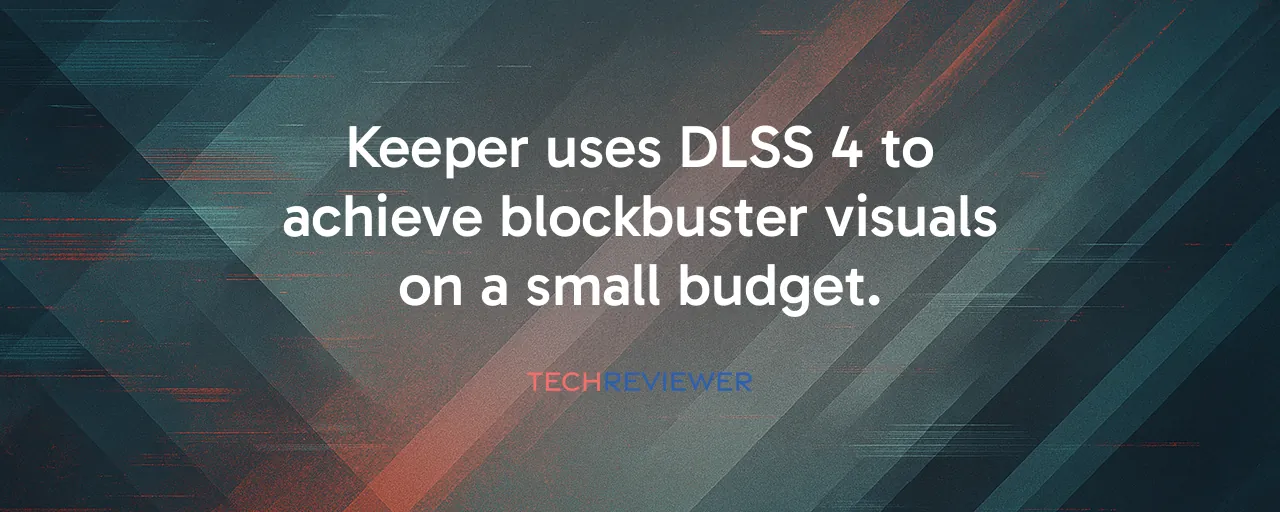A New Era for Small Studios
Double Fine Productions, the studio behind the quirky Psychonauts series, dropped something special on October 17, 2025. Their latest game, Keeper, is a wordless puzzle-adventure that follows a sentient lighthouse and its seabird companion through surreal, shape-shifting landscapes. Priced at $29.99 and available day-one on Xbox Game Pass, it's a compact project compared to their six-year epic, Psychonauts 2. What makes Keeper stand out isn't just its evocative storytelling but how it leverages NVIDIA's DLSS 4 technology to deliver visuals that rival bigger-budget titles. This combination of creativity and cutting-edge tech shows how AI upscaling is opening doors for smaller studios to compete in a blockbuster-dominated industry.
For a studio like Double Fine, known for bold, experimental ideas, the ability to tap into advanced rendering without breaking the bank is a game-changer. Keeper's release highlights a broader trend: AI-powered graphics are leveling the playing field, letting developers with modest resources create experiences that look and feel premium. By using DLSS 4's Multi Frame Generation, Keeper achieves silky-smooth performance, even on mid-range PCs, proving that innovation doesn't always need a massive budget.
The Power of DLSS 4 in Action
NVIDIA's DLSS 4, introduced at CES 2025, takes AI upscaling to new heights. Unlike earlier versions, it can generate up to three additional frames for every one rendered, using the Blackwell architecture's fifth-generation Tensor Cores. For Keeper, this means players with GeForce RTX 50 Series GPUs can enjoy fluid 4K visuals at high frame rates, even though the game launched before DLSS 4's native integration was widespread. What's more, NVIDIA's app, which replaced GeForce Experience in November 2024, lets users upgrade Keeper's visuals to DLSS 4 via driver-level overrides, no developer patch required.
Compare this to a title like Cyberpunk 2077, which uses DLSS 4 to hit 4K at 240 FPS with full ray tracing on an RTX 5090. While Cyberpunk showcases the tech's power in a high-budget setting, Keeper proves it's just as impactful for smaller projects. Both games benefit from transformer-based AI models that enhance image clarity and reduce artifacts, making scenes with complex motion or lighting look sharper. For players, this translates to immersive experiences without needing top-tier hardware, though RTX exclusivity remains a hurdle for those with AMD or Intel GPUs.
Why Overrides Change the Game
One of DLSS 4's standout features is its override system, rolled out in August 2025. This lets players apply the latest AI rendering advancements to games like Keeper without waiting for developers to update them. For a small studio like Double Fine, this is a lifeline. Integrating DLSS initially is manageable, but keeping up with rapid tech updates can strain limited resources. Overrides shift that burden to NVIDIA's drivers, ensuring games stay visually competitive over time. By March 2025, over 100 titles supported DLSS 4, and by May 2025, that number reached 125, demonstrating rapid adoption of the technology.
This system also empowers players. Those with RTX 50 Series cards can tweak settings in the NVIDIA app to unlock Multi Frame Generation, boosting performance without sacrificing quality. However, it's not perfect. Some players find the app's technical options daunting, and visual artifacts, like ghosting in fast-moving scenes, can still pop up. Despite these quirks, the override approach signals a future where gamers have more control over their experience, a shift that could redefine how we think about game updates.
Balancing Innovation and Challenges
Not everyone's sold on AI upscaling. Some players, especially in competitive gaming circles, argue that frame generation adds input latency, making it less ideal for fast-paced titles. In Keeper, a slower-paced puzzle game, this isn't a dealbreaker, but it highlights a trade-off: smoother visuals versus split-second responsiveness. Critics also point out that DLSS's reliance on Tensor Cores locks out non-RTX users, creating a split experience where only some get the full visual package.
On the flip side, developers see AI upscaling as a way to push boundaries. Double Fine's Keeper uses DLSS to deliver ray-traced lighting that would've been too demanding otherwise, letting them focus on storytelling over optimization grunt work. Energy efficiency is another win. Studies show DLSS with frame rate caps can cut power use by 20 to 49 percent compared to native 4K rendering. For players, that means lower electricity bills and longer-lasting GPUs, though the upfront cost of RTX hardware can sting.
What Keeper Teaches Us About Gaming's Future
Keeper's success with DLSS 4 offers a glimpse into where gaming is headed. Small studios can now craft visually ambitious titles without massive budgets, thanks to AI rendering. Compare this to Ratchet and Clank: Rift Apart, which used DLSS to outshine AMD's FSR in handling transparent objects and motion clarity. Both cases show AI upscaling's versatility, from indie gems to console blockbusters. The override system further hints at a world where games evolve post-launch, staying fresh as tech advances.
Yet, questions linger. Will reliance on AI upscaling lead developers to skimp on native optimization? Could proprietary tech like DLSS create a walled garden, limiting access for non-NVIDIA users? For now, Keeper stands as a testament to what's possible when creativity meets cutting-edge tools. As more studios follow Double Fine's lead, AI rendering could redefine how we experience games, making high-end visuals accessible to more players than ever before.
